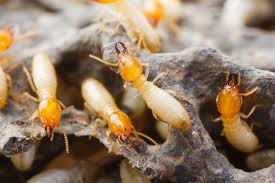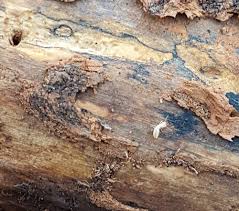All about Termite Control Process
As of 2013, about 3,106 living and fossil termite species are recognised, categorized in 12 households. The infraorder Isoptera is split into the following clade and family groups, showing that the subfamilies in their respective classification:26

Within China, termite species are limited to moderate tropical and subtropical habitats south of the Yangtze River.34 In Australia, all ecological groups of termites (dampwood, drywood, subterranean) are endemic to the country, with over 360 categorized species.34.

The smart Trick of Termite Control Procedure That Nobody is Discussing
As a result of their soft cuticles, termites do not inhabit cool or cold habitats.36 There are three environmental forms of termites: dampwood, drywood and subterranean. Dampwood termites are found only in coniferous woods, and drywood termites are found in hardwood forests; subterranean termites live in widely diverse regions.34 One species in the drywood category is the West Indian drywood termite (Cryptotermes brevis), which is an invasive species in Australia.37.
Termites are generally small, measuring between 4 to 15 millimetres (0.16 to 0.59Â in) in length.34 The largest of extant termites are the queens of the species Macrotermes bellicosus, measuring around over 10 centimetres (4Â in) in length.38 Another giant termite, the extinct Gyatermes styriensis, flourished in Austria during the Miocene and had a wingspan of 76 millimetres (3.0Â in) and a body length of 25 millimetres (0.98Â in).39note 1. )

Termite antennae have a number of functions like the sensing of touch, taste, odours (including pheromones), heat and vibration. The three primary segments of a termite antenna include a scape, a pedicel (typically shorter than the scape), and the flagellum (all segments beyond the scape and pedicel). The mouth parts contain a maxillae, a labium, and a pair of mandibles.
The Buzz on Termite Control Products
Consistent with all insects, the anatomy of the termite thorax consists of three segments: the prothorax, the mesothorax and the metathorax. Each segment contains a pair of why not try here legs. On alates, the wings are located at the mesothorax and metathorax. The mesothorax and metathorax have well-developed exoskeletal plates; the prothorax has smaller plates. .
Termites have a ten-segmented abdomen with two plates, the tergites and also the sternites. The tenth abdominal segment has a pair of short cerci.45 There are ten tergites, of which nine are broad and one is elongated. The reproductive organs are much like those in cockroaches but are more simplified. For example, the intromittent organ is not present in male alates, and the semen is immotile or aflagellate.
Unlike in other termites, Mastotermitidae females possess an ovipositor, a characteristic strikingly similar to that in female cockroaches.48.
The Basic Principles Of Termite Control Process
The non-reproductive castes of termites are wingless and rely solely on their six legs for locomotion. The alates fly only to get a brief amount of time, and therefore that they also rely on their legs. The appearance of the legs is similar in each and every caste, but the soldiers have larger and heavier legs.
The number of tibial spurs on an individual's leg fluctuates. Some species of termite have an arolium, located between the claws, which can be present in species that scale on smooth surfaces but is absent in many termites.49.
Unlike in ants, the hind-wings and fore-wings are of equal length.2 Most of the time, the alates are poor flyers; their technique would be to launch themselves in the air and fly in a random direction. Studies indicate that in comparison to larger termites, smaller vases cannot fly long distances. When a termite is in flight, its wings remain at a ideal angle, and when the termite is at rest, its wings remain parallel to the body.51.
Caste method of termites A King B Queen C Secondary queen D Tertiary queen E Soldiers F Worker
Some Of Termite Control Process
Worker termites undertake the maximum labor within the colony, being responsible for foraging, food storage, and brood and nest maintenance.53 Workers are tasked with the digestion of cellulose in food and are consequently the most likely caste to be found in infested wood. The process of worker termites feeding different nestmates is popularly known as trophallaxis.